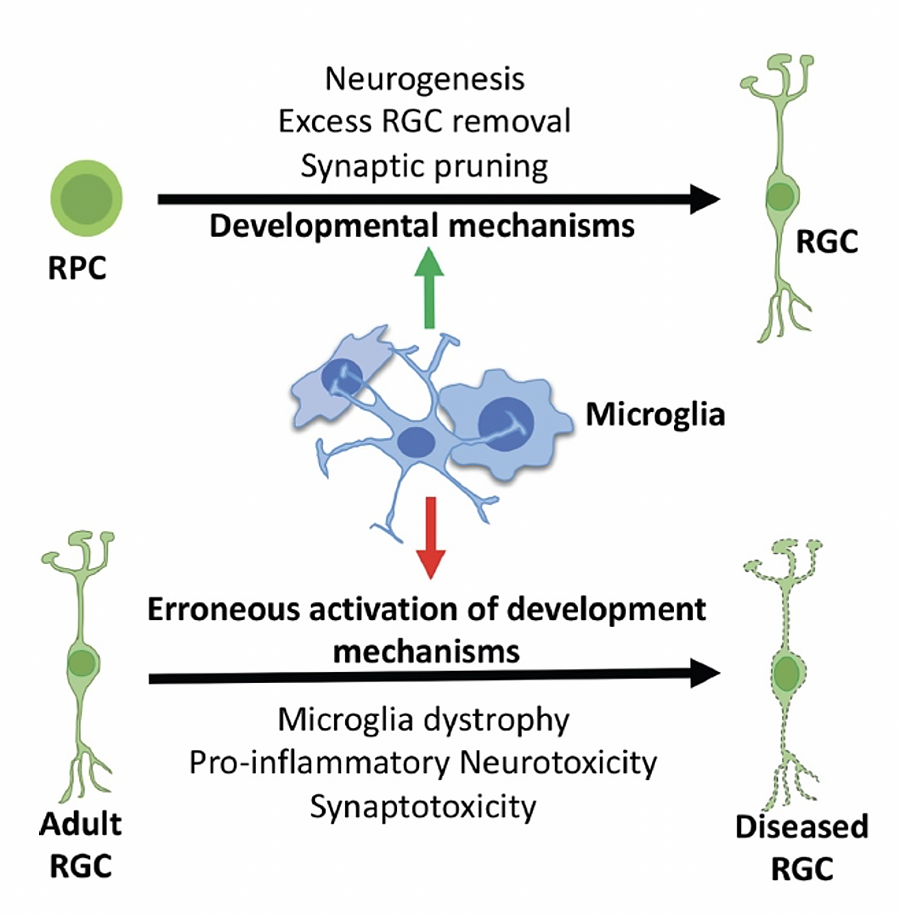Microglia and Retinal Degeneration

The involvement of microglia in the development and degenerative changes in the retinal ganglion cells (Ahmad et al., 2023).
Glaucoma is the most prevalent form of optic neuropathy where a progressive degeneration of retinal ganglion cells (RGCs) leads to irreversible loss of vision. The mechanism underlying glaucomatous degeneration remains poorly understood. However, evidence suggests that microglia, which regulate RGC numbers and synaptic integrity during development and provide homeostatic support in adults, may contribute to the disease process. Animal models of glaucoma have shed valuable light on the association of activated microglia with the glaucomatous RGC dysfunction and degeneration. However, the premise that activated microglia make RGC vulnerable to the disease remains unexplored in humans because of the inaccessibility to the human microglia and RGCs. We are using human iPSC-derived microglia in our glaucoma disease model and microfluidic model of optic nerve regeneration in a coculture paradigm to examine the role of the human microglia in RGC dysfunction and regeneration.